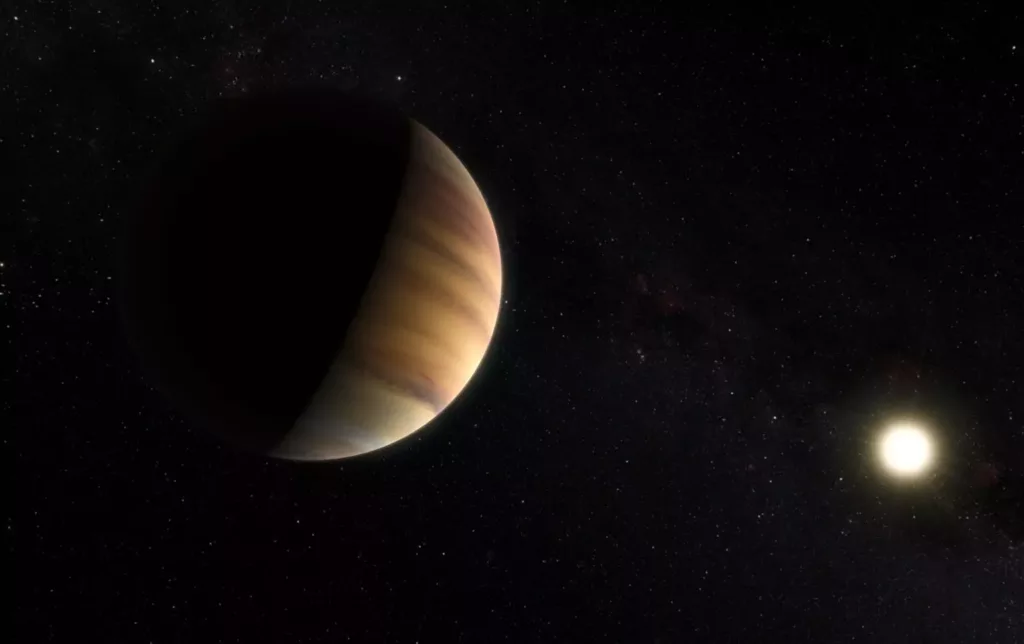51 Pegasi b is a gas giant exoplanet that orbits a G-type star. 51 Pegasi b is the first extrasolar planet confirmed to orbit a sunlike star. The star is discovered on 6 oct 1995 by two swiss astronomer Michel Mayor andDidier Queloz
The star is about 50 light years away from the earth and in the direction of our constellation Pegasus the Flying Horse. The star has physical properties very similar to those of the sun (For Example Temperature , luminosity). The average orbit speed of this star is around 136 km/s and it’s temp is 1284 ± 19 K.
Orbital characteristics
| Apastron | 0.0534 AU (7,990,000 km) |
|---|---|
| Periastron | 0.0520 AU (7,780,000 km) |
| Semi-major axis | 0.0527 ± 0.0030 AU (7,880,000 ± 450,000 km) |
| Eccentricity | 0.013 ± 0.012 |
| Orbital period | 4.230785 ± 0.000036 d 101.5388 h |
| Average orbital speed | 136 km/s |
| Star | 51 Pegasi |
The name of this star is come from it’s parent planet 51 pegasi. The weight of the star is 0.46 mass of jupiter. The planet is detached with the help of Radial velocity (ELODIE). The star is the first known hot Jupiter a gas giant planet orbiting very close to its star. This star is also known that this planet is tidally locked to its star, much as our moon is tidally locked to Earth, always presenting the same face to it. It’s what’s known today as a hot Jupiter.
The Planet is so far from the earth even the largest earthly telescopes can’t see planet. So, what did Mayor and Queloz find, and how did they do it? there are many ways to find exoplanet, radial velocity method. The star doesn’t move as much, the star still shows a noticeable wobble due to their gravitational tugs on each other. By seeing this wobble ,we can infer that there’s a planet around it and we get an idea how star big and how far is it.
The 2019 Nobel Prize in Physics are awarded ”for contributions to our understanding of the evolution of the universe and Earth’s place in the cosmos”, with one half to James Peebles “for theoretical discoveries in physical cosmology” and the other half jointly to Michel Mayor and Didier Queloz “for the discovery of an exoplanet orbiting a solar-type star.”
Source – Nasa , Nobelprize , Wikipedia
